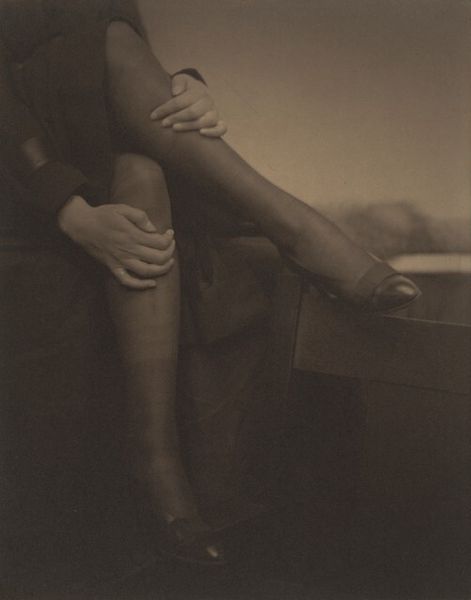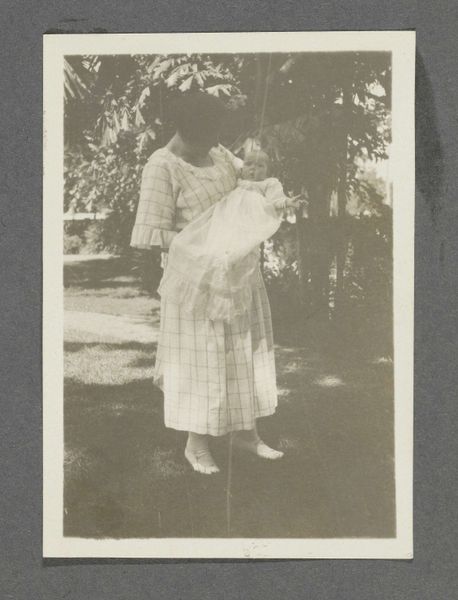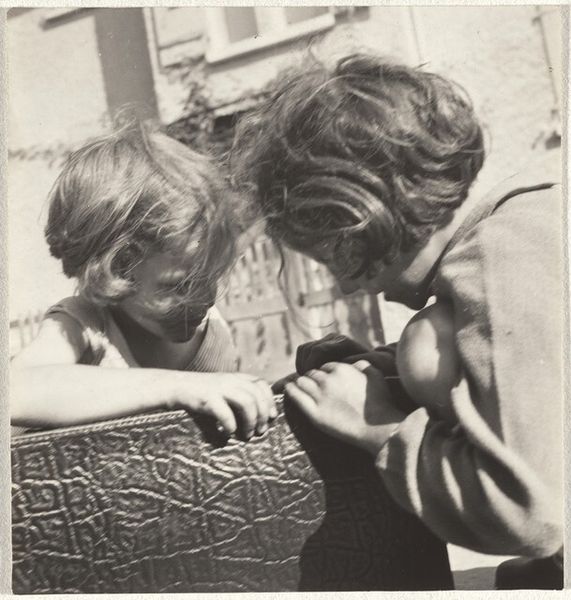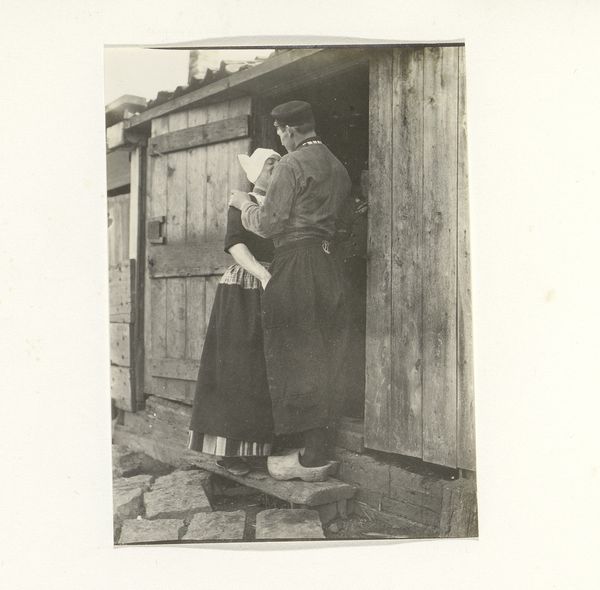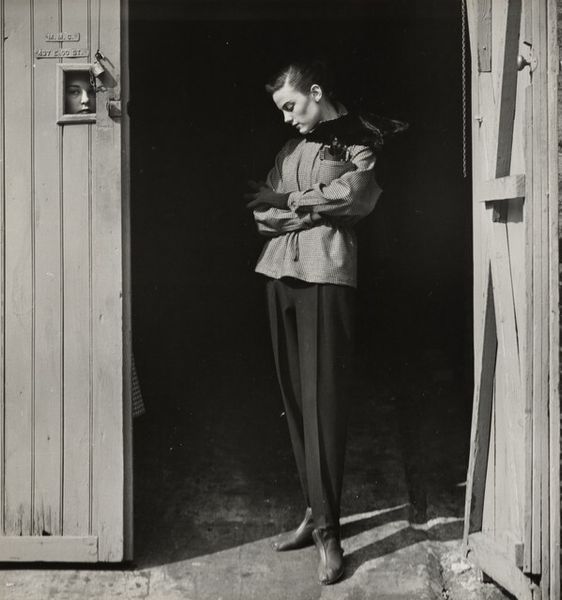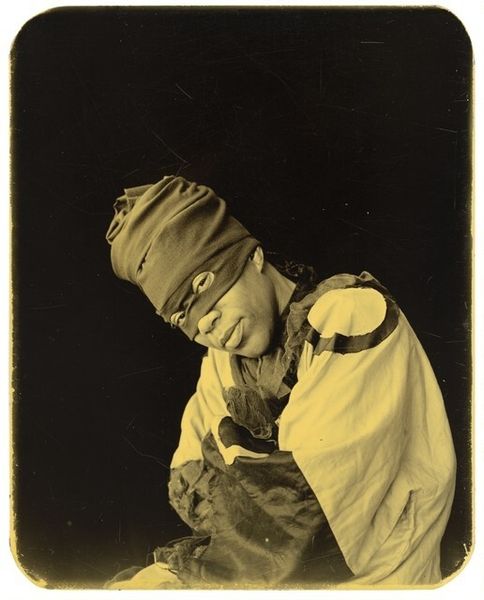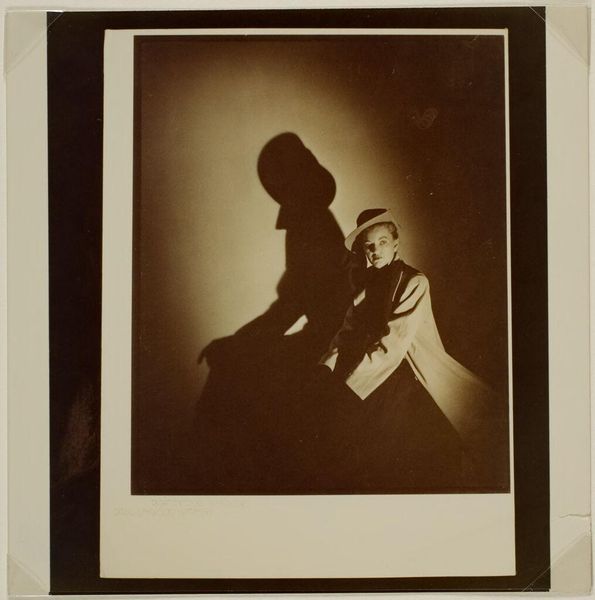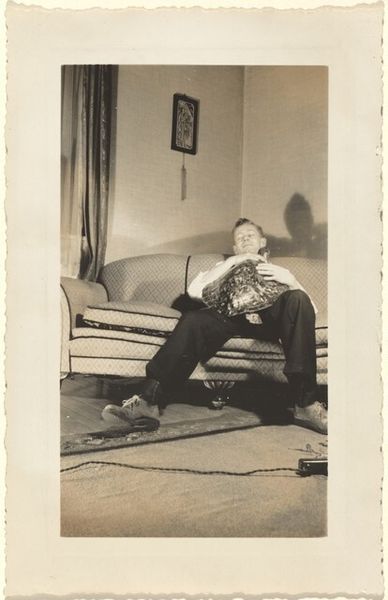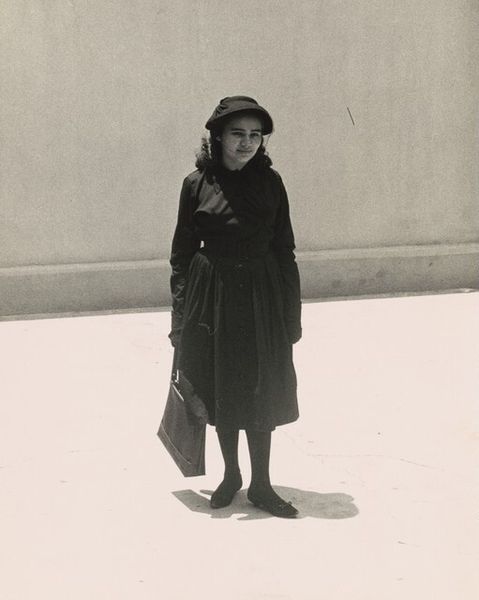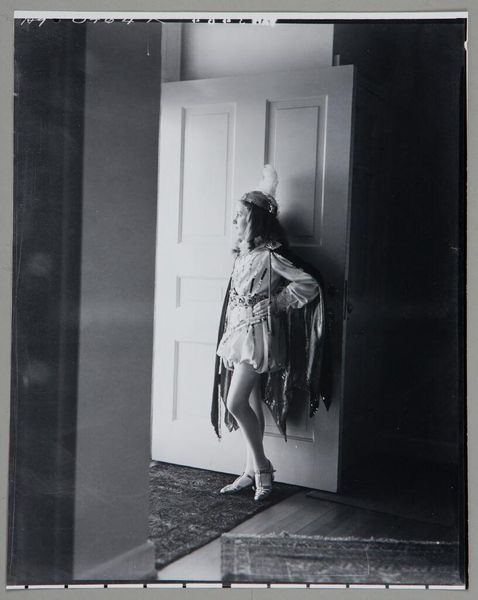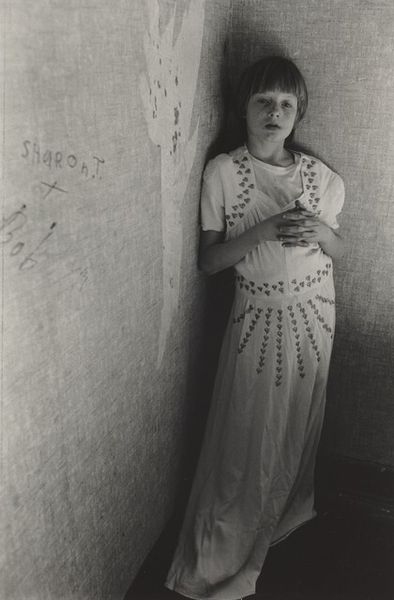
Copyright: Brassai,Fair Use
Curator: Standing before us is Brassai's "Lovers in the Latin Quarter," a gelatin-silver print taken in 1932. The high contrast immediately draws me in; it's a study in light and shadow. Editor: It's…romantic, in that old-fashioned cinematic way. But also clandestine. Like they're caught in a moment they shouldn't be having, the kind of moment the city allowed for under the cover of night. Curator: Consider the context. Brassaï documented Paris during the interwar period, especially the city's nightlife and marginalized communities. His photographic process involved using a Voigtländer Bergheil camera and often long exposures due to the dimly lit streets. The graininess becomes part of the overall aesthetic. Editor: Right, and within that context, this isn’t just a pretty picture of young love. It reflects the burgeoning freedoms and anxieties of the era, especially for women. We see a couple, but what power dynamics are at play? What social norms are they pushing against? Their embrace, while seemingly tender, is also quite guarded. Curator: Note how Brassai utilizes the available light, emphasizing the cobbled street. It directs the viewer's eye towards the couple, making us complicit observers. This wasn't a posed shot, necessarily, but it wasn't entirely spontaneous, either. There’s intention in the framing and focus. Editor: Definitely intentional, shaping a narrative about Parisian life, seen through his eyes, reflecting both the glamor and the gritty realities of that world. The couple’s attire situates them socially. It speaks volumes about class and belonging during that period. Curator: Yes, the material conditions of the print itself, the quality of the gelatin silver, impacts the depth and luminosity we perceive. Each print produced from the negative varied slightly. The paper's texture affects how light reflects, changing the mood. Editor: It pushes me to wonder, what kind of stories did these two carry, and what was the social climate that allowed for moments like this? The artwork provides a window into the intricate layers of Paris, exposing both its beauty and complexities, capturing one intimate moment. Curator: Reflecting on it, I see the image not just as a captured moment, but as a complex layering of technical craft and calculated social observation. Editor: Ultimately, it asks us to reflect on the role of intimacy, politics, and power within urban landscapes and individual identities.
Comments
No comments
Be the first to comment and join the conversation on the ultimate creative platform.
